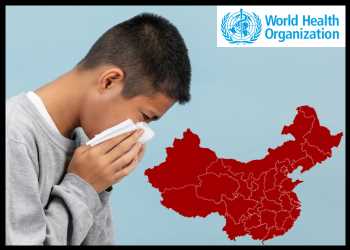The World Health Organization has made an official request to China to provide detailed information on an increase in respiratory illnesses and reported clusters of pneumonia among children in that country.
WHO said in a statement Wednesday that authorities from China’s National Health Commission reported an increase in incidence of respiratory diseases at a press conference last week.
Chinese authorities attributed this increase to the lifting of Covid-19 restrictions and the circulation of known pathogens such as influenza, mycoplasma pneumoniae (a common bacterial infection which typically affects younger children), respiratory syncytial virus (RSV), and SARS-CoV-2 (the virus that causes COVID-19).
WHO said that on Tuesday, media and ProMED reported clusters of undiagnosed pneumonia in children in northern China. It is unclear if these are associated with the overall increase in respiratory infections previously reported by Chinese authorities, or separate events.
On Wednesday, WHO requested additional epidemiological and clinical information, as well as laboratory results from these reported clusters among children, through the International Health Regulations mechanism. The UN health agency said it has also requested further information about recent trends in the circulation of known pathogens including influenza, SARS-CoV-2, RSV and mycoplasma pneumoniae, and the current burden on health care systems. WHO is also in contact with clinicians and scientists through our existing technical partnerships and networks in China.
Since mid-October, northern China has reported an increase in influenza-like illness compared to the same period in the previous three years. China has systems in place to capture information on trends in influenza, influenza-like illnesses, RSV and SARS-CoV-2, and reports to platforms such as the Global Influenza Surveillance and Response System.
WHO said it has recommend that people in China follow measures to reduce the risk of respiratory illness. They include recommended vaccination; keeping distance from people who are ill; staying home when ill; getting tested and medical care as needed; wearing masks; ensuring good ventilation; and regular hand-washing.
Source: Read Full Article
-
U.S. Stocks Close Modestly Higher After Choppy Session
-
Time Ventures Into Original Podcasts With ‘Person Of The Week’; Ethan Hawke & Elliot Page To Be Among First Guests
-
‘The Thanksgiving Play’ Sets Broadway Cast: D’Arcy Carden, Katie Finneran, Scott Foley & Chris Sullivan
-
Broadway’s ‘Merrily We Roll Along’ With Daniel Radcliffe, Jonathan Groff & Lindsay Mendez Sets Opening Night – Update
-
Chipotle Employees In Michigan Vote To Form Union

